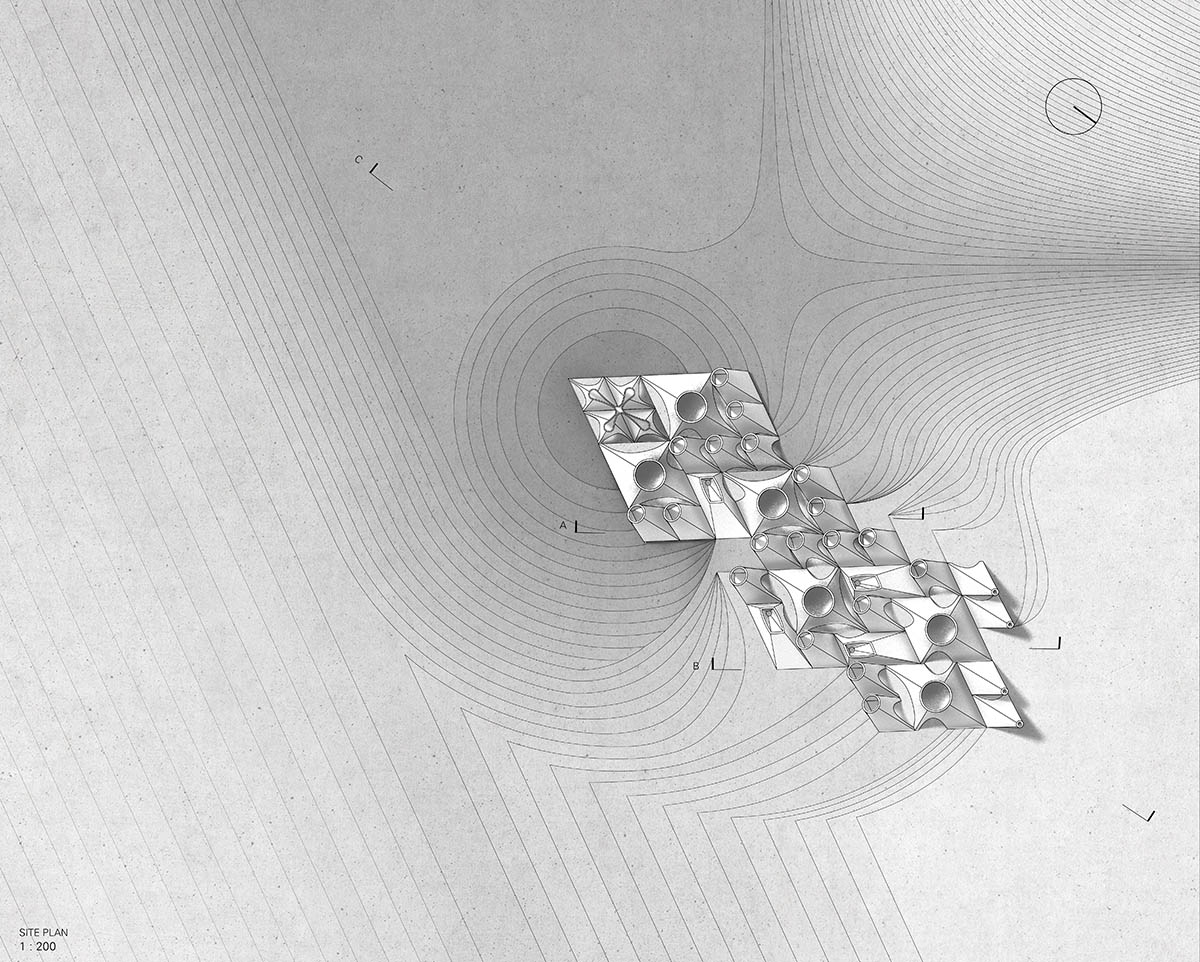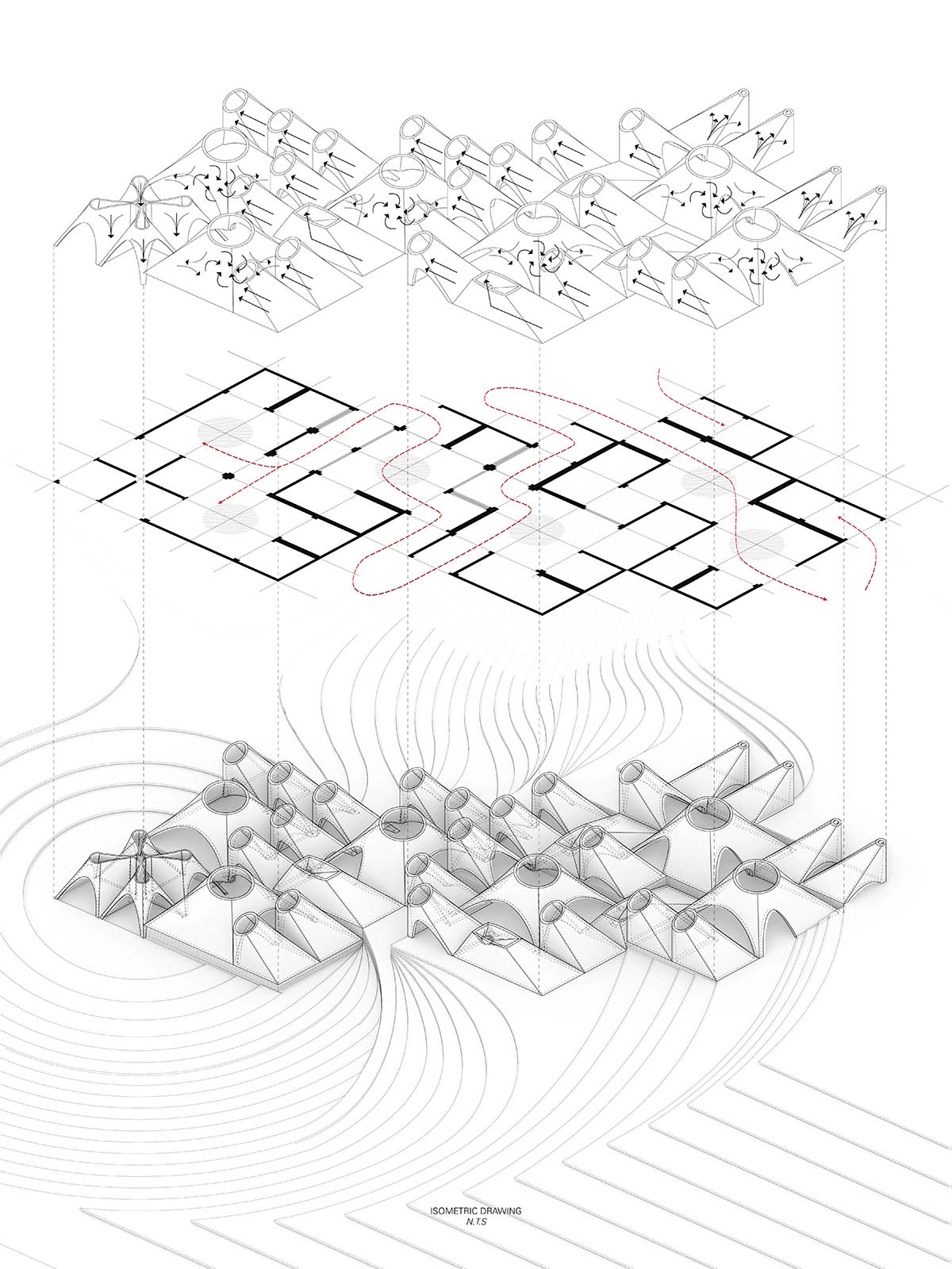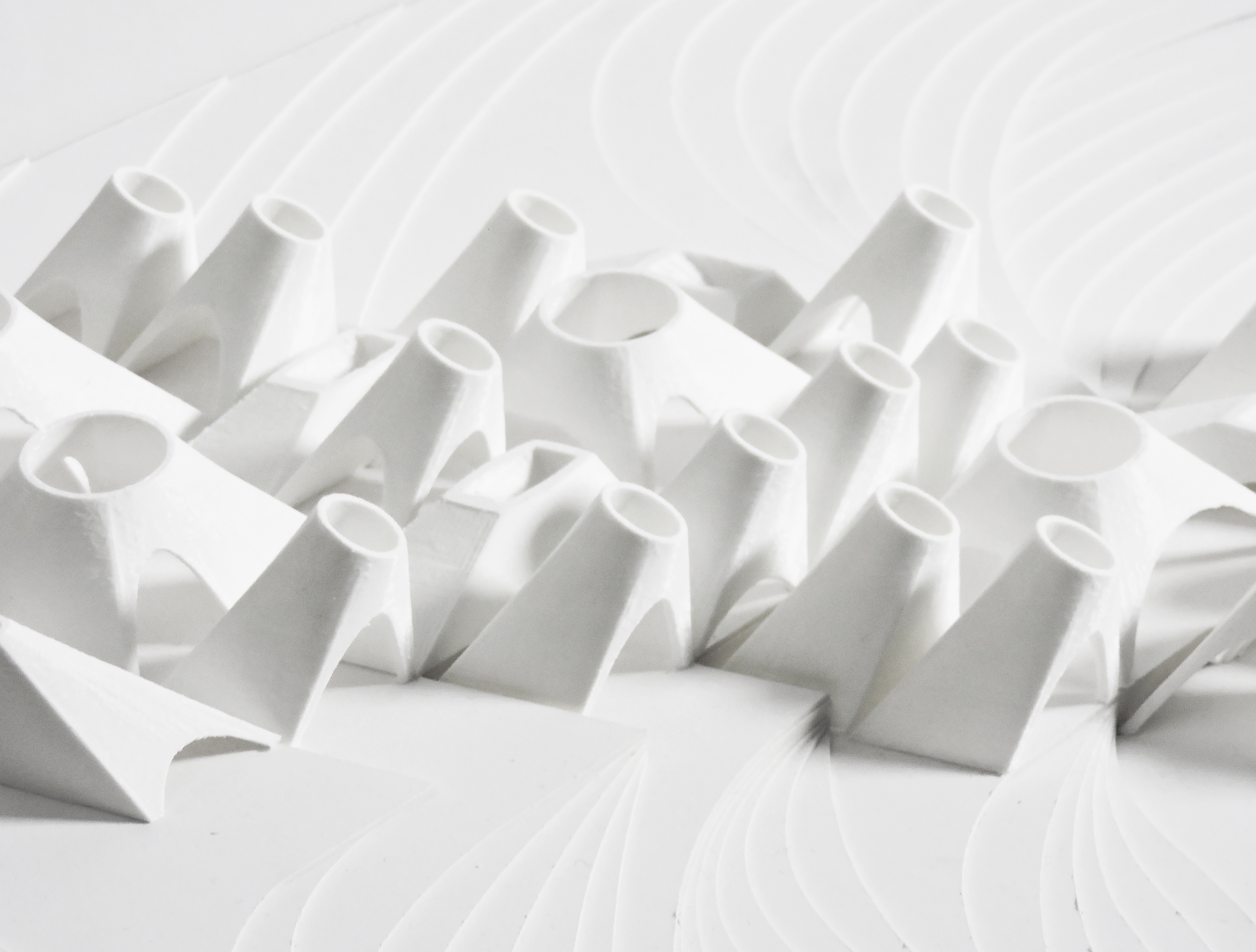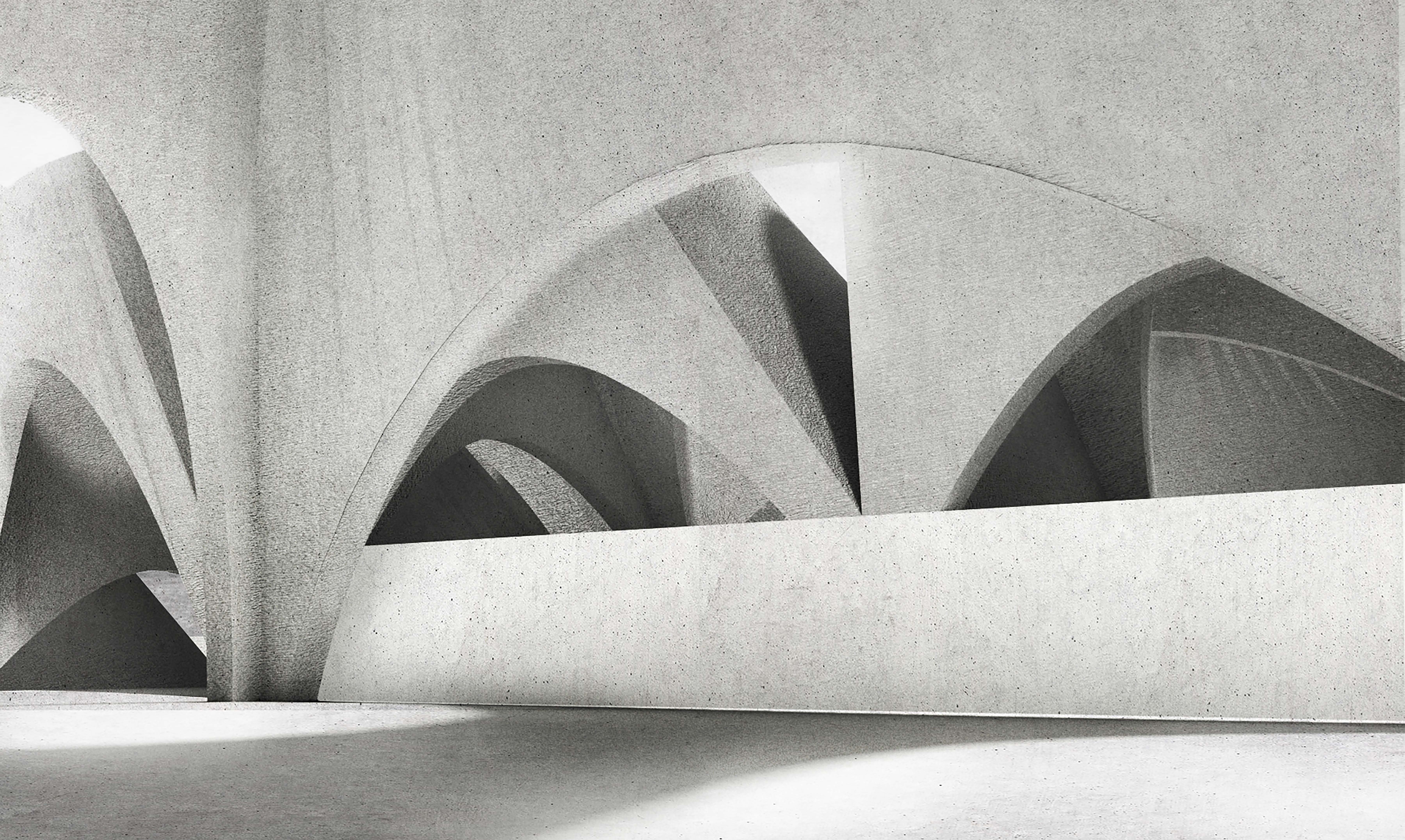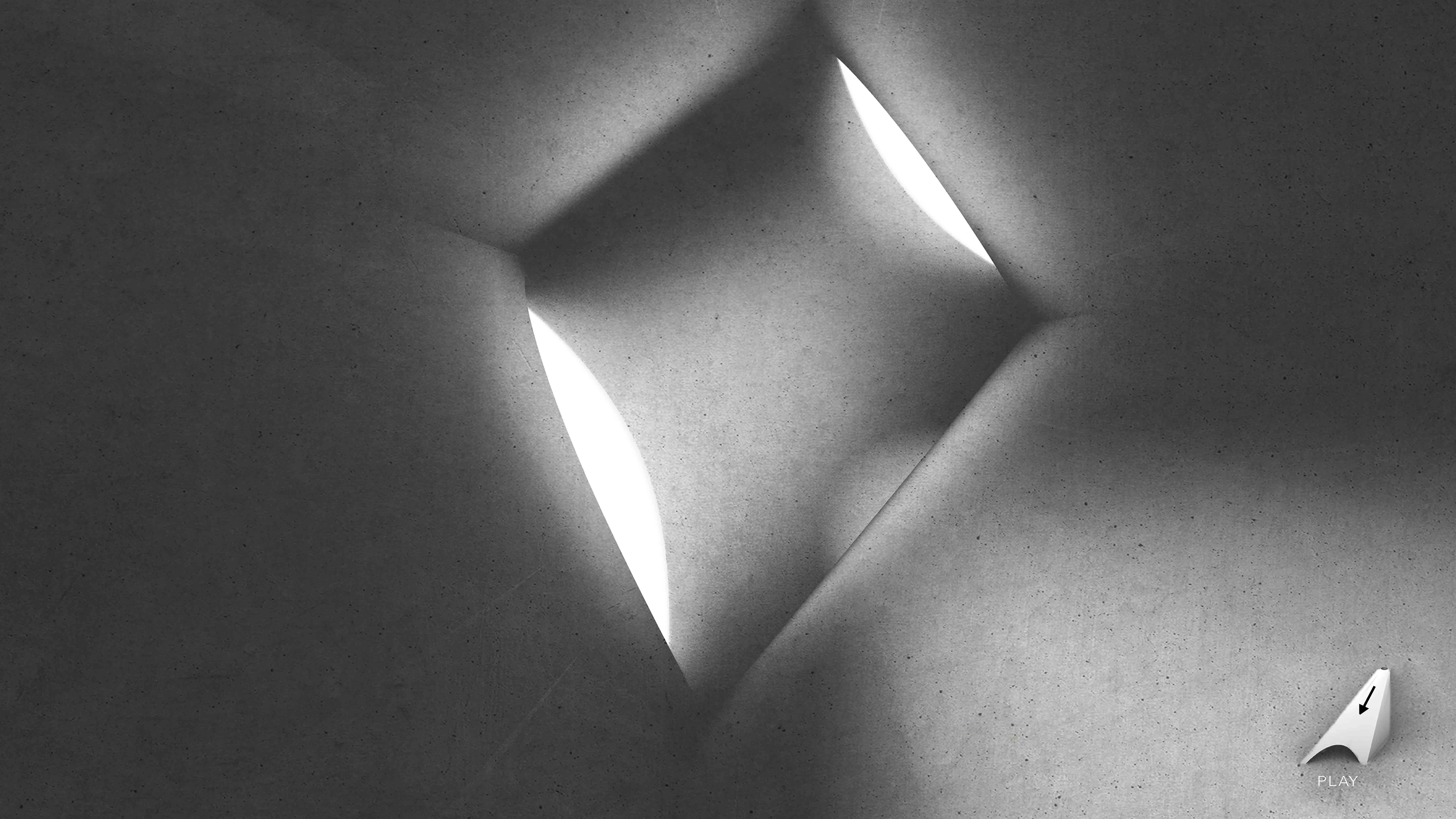Bed Rooms
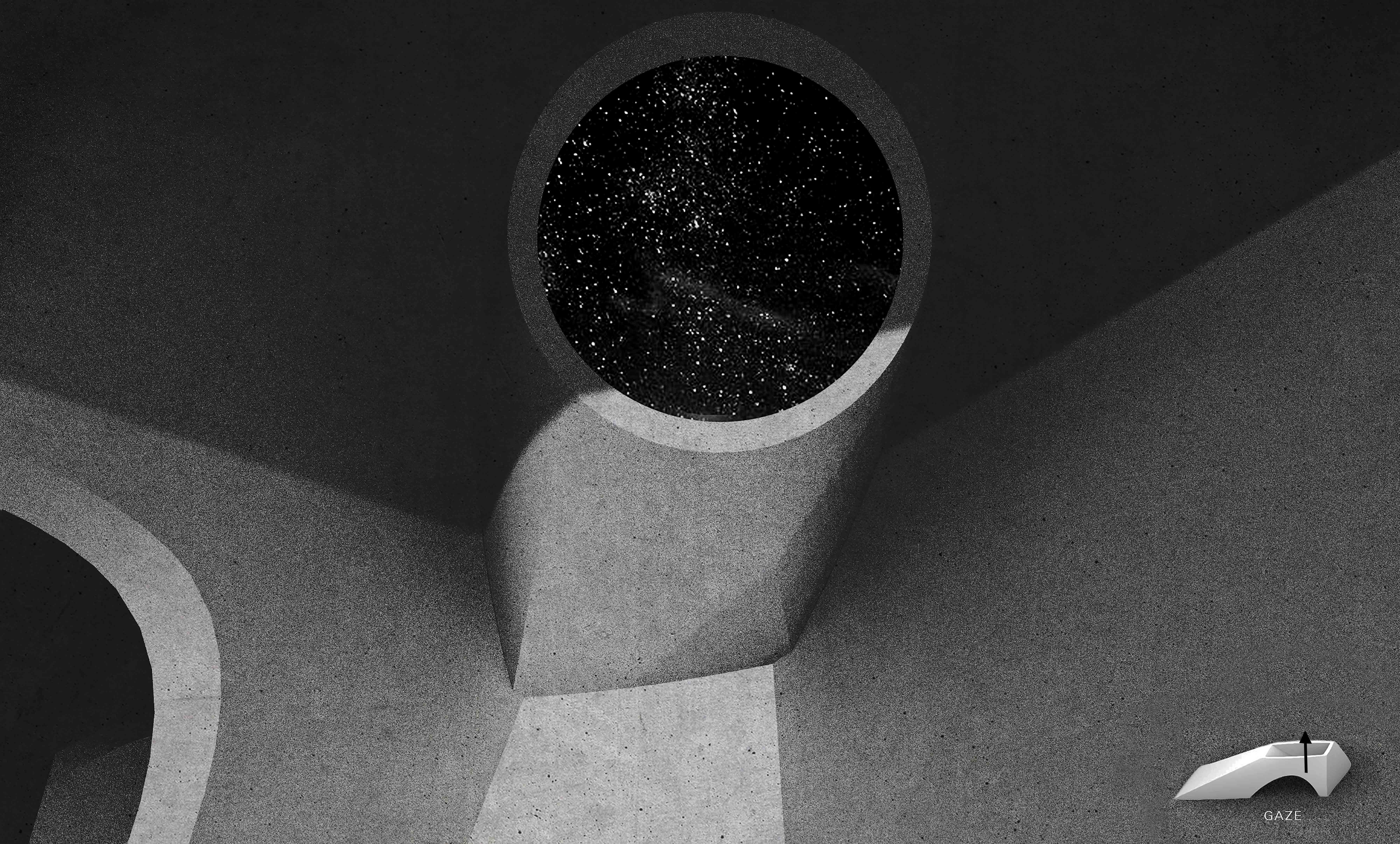
by Qin Ye Chen (MArch I ’22)
In Bed Rooms, five modes of activation produce five spatial bays with formal and spatial qualities that encompasses a range of social conditions associated with the given object, “bed.” The five modes of activation are: play—a space for jumping on the bed; gaze—a space for lying on the bed to look up at the sky; rest—a space for sleeping; gather—a space for sleepovers; and meditate—a space for contemplative practices. These spatial bays work as a critique of default modes of thinking about the space of the bed, exposing misbehaviors that have interesting formal consequences.
During the design process, a key question was posed: how can the bays manage a number of spatial conditions and work with light, sound, body movement, and landscape? The result was a set of bays that follow an underlying grid framework while also exhibiting a variety of orientations, heights, opening sizes, and tilting angles, giving it an almost creaturely reading from the exterior.
Landscape is also an integral part of the project. Circulation stitches the bays together and pinching of landscape funnels in and out of the bays. Another question that was posed was how can the ground be used as part of the project to express “bedness?” Unlike other common objects, bed is large and spatial—its physical existence has an impact on how one experiences a room. The project challenges common perceptions of bedrooms; the next question would be how can a room express “bedness” without the bed being there?
